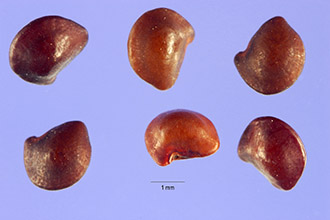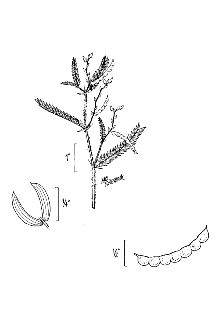Shyleaf
Scientific Name: Aeschynomene americana L.

| General Information | |
|---|---|
| Usda Symbol | AEAM |
| Group | Dicot |
| Life Cycle | Perennial |
| Growth Habits | Forb/herbSubshrub, |
| Native Locations | AEAM |
Plant Guide
Use a soil moisture meter to monitor the soil moisture where Shyleaf is planted.
Fact Sheet
Alternate Names
Shyleaf
Uses
Jointvetch is primarily used as an annual grazing crop that can be cut for hay before maturity. Deer graze it and quail, dove, and turkey eat the seed. It can also be used as components of fresh water wetland reclamation seedings.
Status
Please consult the PLANTS Web site and your State Department of Natural Resources for this plant’s current status (e.g. threatened or endangered species, state noxious status, and wetland indicator values).
Description and Adaptation
Adaptation
Adaptation
Legume Family (Fabaceae). Jointvetch is an upright native, annual to short-lived perennial plant that could be classified as a forb or subshrub growing 3 to 6 feet tall. The stems are well-branched and moderately leafy. The leaves are compound, have 25 to 60 leaflets measuring 3 inches long, and are sensitive to light and touch. The flowers are yellow with dark lines and appear as loose clusters. Robert H. Mohlenbrock USDA SCS 1991 @ PLANTS
Establishment
The site should be moderately to poorly drained, If the site floods during the rainy season, the stand should be well established before flooding begins, Taller plants have a moderate tolerance to temporary flooding, During hot weather, seedlings can be damaged within a few days, The soil should be well prepared by plowing, disking, and packing, Excellent volunteer stands may be obtained by disking areas that had successful stands and matured seed the previous year, Apply lime, if necessary, to bring the soil pH into the 5,5 to 6,5 range, Seed between March 1 and June 30, if irrigated, or after June 1st when there is a greater chance of adequate rainfall to allow germination and sustain the seedling, In a prepared seed bed, broadcast 5 pounds per acre de-hulled seed or 10 lbs/acre in the hull, Use soil moisture sensors to measure the soil moisture of Shyleaf., If you are seeding into existing pastures, the seeding rate should be doubled, Cultipack the ground after seeding, Place seed at a ½ to 1 inch seeding depth, All seed should be inoculated with either “cowpea” or special Aeschynomene culture,


